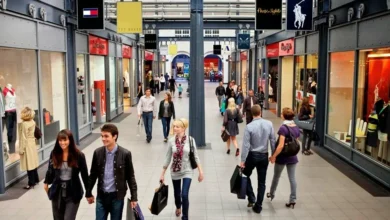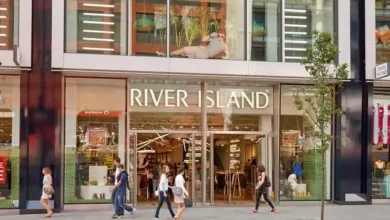Can e-commerce save the high street?

Register to get 1 free article
Reveal the article below by registering for our email newsletter.
Want unlimited access? View Plans
Already have an account? Sign in
According to PwC a record net 2,481 stores disappeared from the UK’s top 500 high streets in 2018 – 40% more than in 2017 – a worrying statistic for the future of the high street.
Even the big retailers were not immune with Maplin, Toys R Us and Poundworld casualties in 2018, and more recently high street stalwarts Debenhams and LK Bennett calling in the administrators.
The e-commerce sector has been an easy target to blame for the struggles experienced by the high street. After all, they are very competitive in their pricing largely because they have significantly less overheads than bricks-and-mortar stores and offer the convenience of delivery – often next or same day.
But that’s not to say that e-commerce hold all the trump cards. There are benefits of a well-positioned and thought through physical high street presence to deliver sales and a strong customer experience.
What is important today is having a multi-channel presence. If you operate offline only you should consider going online, and if online only think about a physical presence in the right locations, one that delivers the customer experience appropriate for your brand.
Even Amazon recognises the importance of a physical presence. They have Amazon Go that uses new technology which does away with an in-store checkout to speed up and improve the customer experience in their stores. It’s something offline retailers can learn from and highlights how the high street can evolve to improve their offering and standout.
E-commerce and high street partnerships
However, what will have the biggest impact on saving the high street is e-commerce working together with bricks and mortar stores for mutual benefit. This is particularly the case with returns with research highlighting that today more than 20% of all purchases made online are returned, more than double the return rate experienced by high street stores. And with research by YouGov communicating that 74% of consumers are likely to switch retailers due to poor returns management it’s vital those in e-commerce make the returns process as easy and straightforward as possible to ensure their customers remain loyal.
Through a partnership with a bricks and mortar retailer those in e-commerce could offer customers the convenience of returns for unwanted items in a high street location. Such an arrangement would benefit both parties – with increased footfall and sales for the physical retailer, and improving the customer experience, as well as potentially reducing the cost of returns for the e-commerce retailer.
Continuing on the partnership theme the growing trend for click and collect which is set to see a 45.8% growth in the UK over the next five years according to GlobalData, offers the opportunity for physical stores to place lockers from e-commerce retailers in-store, allowing online shoppers to pick up their orders when out and about. This will also encourage footfall and therefore the potential for increased sales in the high street store. Whereas those in e-commerce will benefit from delivering greater convenience to their customers – for instance the option of being able to pick up their order from a shop near their place of work in their lunch hour.
Physical stores working together
Bricks and mortar retailers can take a leaf out of the book of the larger e-commerce retailers and start to compete with them on the range of goods they offer, as consumers get used to the convenience of ordering a diverse range of products in one place. This can be done by high street retailers partnering with others in a complementary and/or different industry sectors to share stock and therefore offer more choice and value to customers. This could be delivered via in-store EPOS points selling stock from across the partners, with the opportunity for customers to pick up the goods in-store or have it delivered to their home address. Of course, consumers could also shop across the range offered by these retailers online.
Through clever partnerships with those in e-commerce, and each other, as well as embracing the technology and techniques online retailers are using there’s no reason why those in the high street can not only survive but thrive in an increasingly digital age. An important first step is for offline retailers, along with those in e-commerce, to take a step back to see the advantages of working together for mutual benefit.
By Mark Fitzsimmons, managing director at Xigen







